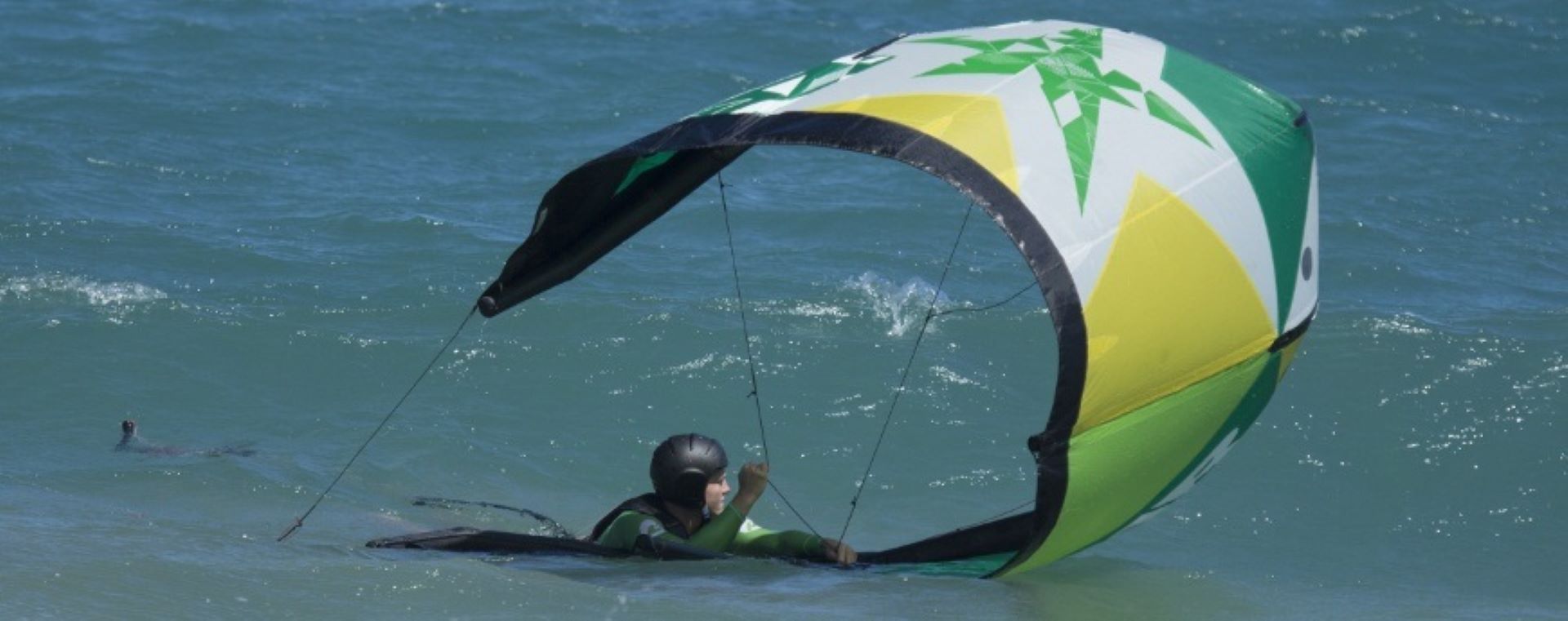Do you know how to recover your kite in deep water?

Self-Rescue is a crucial procedure every rider must master. However it is only useful if your leading edge stays inflated and with onshore wind conditions. If the wind is offshore or your L.E explodes, you will need to be rescued by a boat. In this situation, you have to pack down your equipment while in the water in order to make the rescue easier. When coming back in self-rescue position, make sure you pack down your equipment before reaching the shore break. It can be dangerous to do it on your own with no special training. Check the procedure in the Ecourse from the same name: Self Rescue and Pack Down
What kite size should I use

This is always ‘the’ question every kiter asks several times a day and will probably get different answers each time as there is no truth here. It depends on many factors; obviously the wind strength and your weight matters but not only! Wind density will also be a key factor even if not many people are aware of it. A colder wind will be stronger than a warmer wind of the same speed. The size of the kite will also depend on your riding style. Are you more a strapless rider (smaller kite) or a freestyler on boots (average kite) or an old school rider who wants a bigger kite to stay more time in the air? The length of your lines also has a great impact on the power developed by your kite. All these aspects are discussed in an IKO Evolution Clinic and/or and Assistant Instructor Course. Check out the IKO Training Calendar and join these trainings.
One Rider on Land, the Other in the Water

The rider entering the water from the beach has right of way over the incoming rider. Why? The rationale behind this rule is that the wind is sometimes gusty on land, so the outgoing rider is more at risk and should therefore have priority. The rider entering the water has priority
General Priority

Starboard rider (kite on the right-hand side) has priority over the oncoming rider and should keep his course, speed and heading to allow the other rider to avoid him. Port tack rider (kite on the left-hand side) must give way to oncoming rider by adjusting course or speed and passing downwind with the kite low to avoid a collision. Why? There is no particular reason for this rule with regard to kiteboarding, but its origins come from ancient maritime traditions and is applied in other sports and nautical activities. The rider on the port tack gives way to Starboard
